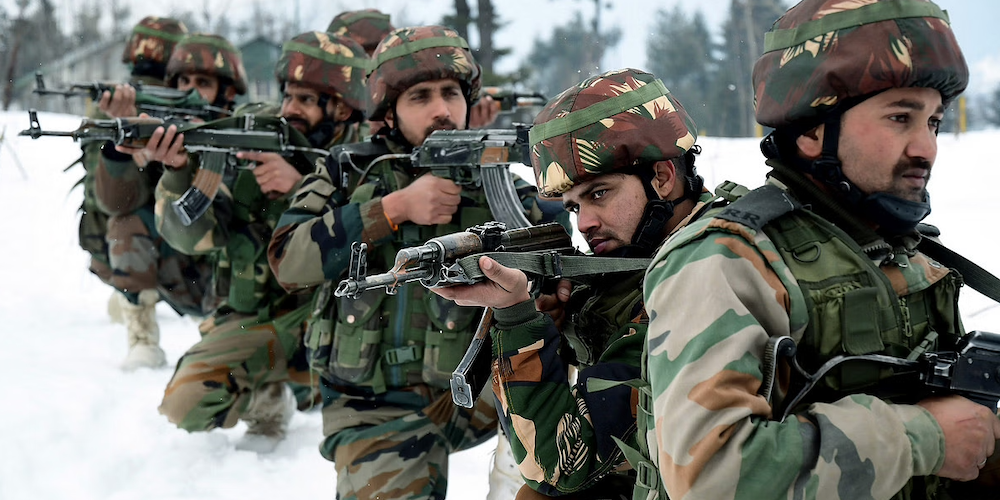A Leaner Army

The Indian armed forces can be more agile, flexible, lethal, innovative, and creative with better hardware. Its extended technological edge can be more destructive than the numerical strength of the enemies.
Few will grudge when Chief of Indian Army General Manoj Pande says that he is reviewing its organisational structures to include rightsizing, rationalising and reorganising, while undertaking modernisation and technology infusion as part of force restructuring and optimisation.
General Pande said this while addressing members of the Pune International Centre, Observer Research Foundation, Officers, Veterans and other distinguished guests on 27 November 2023 at Pune on the commemoration of 8th PDNS of Pune International Centre (PIC).
The Chief emphasised on inextricable link between the Nation’s progress & its security needs and stressed that while economic power is the fountainhead of growth, yet it is the ‘Military Strength’ that lends it the ability to affect the outcomes necessary to protect & further its multifarious interests while ensuring continuous increase in its ‘Comprehensive National Power’.
While deliberating upon the contours of the current & evolving geo-political landscape, the Chief of Army Staff elucidated on the need to ‘Expect the Unexpected’ as the battle space has become more complex, contested & lethal.
Gen Manoj Pande assured the audience that the Indian Army remains seized of the Military Implications of these dynamics. A holistic approach that incorporates implementation of proactive measures towards all aspects that impact or enhance security have been adopted for capability enhancement and ensuring requisite adaptability.
The Chief elaborated upon the Indian Army’s vision to Transform into modern, agile, adaptive technology enabled and self reliant future ready force, capable to deter and win wars in a multi domain operational environment across the full spectrum of operations to protect our national interests in synergy with the other Services.
Initiation of progressive changes based on four key drivers were highlighted by General Pande :
(a) Unprecedented trends in the geo strategic landscape
(b). Limitless potential of Disruptive Technologies
(c). Transforming character of modern Wars
(d) Profound changes in the socio – economic domain
On “Capability Building”, General Pande said that as part of Force Restructuring and Optimization, the Indian Army is reviewing its organisational structures to include “Rightsizing, Rationalising and Reorganising, while undertaking Modernisation and Technology Infusion to include niche technologies including 5G, AI, Quantum Lab, Internet of Military Things, Robotics, Adaptive Manufacturing and Space Assets for Satellite Communication”. He also reiterated that these Capability Development endeavours stand committed to the vision of Atmanirbharta.

On “Nation Building ”, General Pande emphasised that the Indian Army, while remaining resolute towards protection of the nation’s territorial integrity, also contributes significantly in nation building through various endeavours. He dwelled upon the synergy with various stakeholders towards this commitment. He explained the contribution of the Indian Army in Infrastructure Development, especially in far flung remote areas of the country, in synergy with National Logistic requirements. The aspect of empowerment of local communities by promoting Border Area Tourism in collaboration with the Ministry of Tourism and various other initiatives as a major stakeholder to enable, support and fructify an inclusive growth were also elucidated.
While one analyses what General Pande said, it is to be admitted that a significant concern of the government has always been that “manpower costs are also eating into the capital allocation of the armed forces to cover revenue demand.” In the Indian Army, the largest of the three services, salaries account for an even higher share of the revenue budget; it is nearly 70 percent of the Army budget.
Even otherwise, other important world powers are also right-sizing their Armies.
In 2003, China decided to trim down its then 2.5 million-strong force. President Xi Jinping has repeatedly talked of reorganizing China’s military to create a leaner army. At the moment, its Army is 2.3 million strong. Xi reportedly wants to bring it under 1 (one) million.
On the other hand, China would like to increase its Navy and Air Force size and make all the forces high-tech, depending on robots or Artificial Intelligence (AI). Xi recently said, “quantity should be reduced, quality improved to build a capable and efficient modernized standing army.”
In 2012, Great Britain announced a 20% cut, reducing its strength of the Army to 82,000 combatants by the end of the decade. And going to the UK 2021 Defence Review, entitled ‘Defence in a Competitive Age,’ the United Kingdom’s Army is about to shrink further to 10,000 soldiers to augment and modernize technological investments.
The Defence Review says that £23 billion has been set aside for funding in such specialized areas as the new National Cyber Force, Autonomous weapons Systems (AWS), and Space.
Rejecting the theory of classic hard power and troop size, Russia under President Vladimir Putin has turned its military into a lean and quick-strike force. Nowadays, Russian soldiers fight out of brigades, not large divisions.
Similarly, the United States has decided to have smaller and leaner armed forces, given the financial constraints that the country is facing right now. The Pentagon has been asked to massively cut its budget by several hundred billion dollars.
The US Army is reportedly preparing to downsize 40,000 more active-duty personnel from 490,000 to 450,000. However, the Navy, Marine Corps, and Air Force will experience much smaller force reductions. At the same time, care will be taken to ensure that the decrease in manpower will not compromise the fighting capabilities of the US military.
What all this proves is that a leaner military, like the downsized armed forces of the world’s four foremost military powers, will not mean a weaker military.
The reduced workforce will leave more resources for the capital expenditure to have new technologies and more intelligent systems such as ISR (Intelligence, Surveillance, and Reconnaissance) and unmanned systems in space, particularly in cyberspace capabilities.


